Search the Community
Showing results for tags 'detector tech'.
-
On subject of coils and systems... I was out working some areas for relics with a couple others and one guy was killing it with an very vintage 70s Garrett Master Hunter BFO unit with a large home made looking square coil of pvc looking material. After looking into I found that BFO is Beat Frequency Oscillator and was popular before T/R VLF format machines. BFO was not good for small coin shooting and nugget hunting and lacked ability for quality discrimination from what I read but excelled in depth ability, especially on large ferrous cache targets as well as finding mineral deposits like drifts of black sands or veins of ore. So are there currently any units that still use a BFO mode or format? I can find vintage BFO type units available very reasonably priced, is there any information out there on how to bring them up to current on a battery system and build large coils suitable for this type of cache detecting?
-
Good afternoon everyone, I am looking for a long range detector and I would like to know if anyone can design/produce a stand-alone (not hand held) long range detector suitable for detecting gold from a 30-50 metres height. This is a serious enquiry which foresees the purchase of large quantities of such locators/detectors as well as the development of different detectors for other metals/minerals. For a better idea of what I am looking for, please see my drawing below. Thanks, Law-Italy ( lawrencebon@hotmail.it )
-
Everyone needs to watch this video. We talk all the time how lower frequencies ignore ground better and penetrate deeper on larger targets, but how high frequencies are better at getting small targets to respond. This video does a superb job of illustrating how high frequencies do a better job at "lighting up" a small gold target. The key is we are using one detector and coil with all the settings just the same - the only thing that changes is the frequency. This eliminates other extraneous factors that usually play into comparisons of this sort. What this video does not show is how higher frequencies not only "light up" the target but also mineralized ground, creating difficulty with penetrating deeply in that ground. One of the great lessons in metal detecting is that there is no free lunch, and very often improving one thing comes at a cost somewhere else. You can skip right to "the good part" at 2:45
-
Note: thread was split from this previous thread Tone By TID Selection Option? Thanks for posting that reminder on the Fisher F44 Mike. I had forgot about it, and added the chart page to your post. To my mind for coin and jewelry detecting I simply have no interest in owning machines that do not allow me to customize tone ranges and tones. My current stable of coin/jewelry machines are the White's DFX, Minelab CTX, Nokta Impact, and XP DEUS, and all four offer this capability (the ability to customize tone ranges and tones) in one form or another. It really is a killer feature on the F44 at such a low price, only $349 these days. If all I could have is one detector and had to buy a new one under $400 I have no doubt the F44 is what I would end up with. Funny that it gets so little interest on the forums but I guess that reflects the fact most of us tend to be using higher end product. This is a case where Fisher may have sold more by pricing it higher! People may snicker at that but there are sound sales reasons for why that may be true. Look at what you get in a Gold Bug Pro and you would think it should be $349 and the F44 should be $649. Fisher F44 metal detector
-
For background on electrical interference in VLF detectors here is a great essay on electrical interference by Dave Johnson of First Texas Products. You can also find a more detailed discussion that includes PI detectors in section 2.1 of this Minelab document by Bruce Candy. OK, so I am bench testing my new Teknetics G2 at home recently. The 19 kHz models are renowned for being immune to EMI (ElectroMagnetic Interference). No electrical interference ever (well, almost never) even at highest gain levels. As a rule, the lower the frequency, the more issues you have with EMI. It is especially bad under 10 kHz. DEUS owners may see significant EMI at 4 kHz, only a little at 8 kHz, and none at 12 and 18 kHz. Another reason why manufacturers favor mid frequency over low frequency detectors these days. I have been bench testing detectors in my house for years so think I know the EMI levels. No issues with previous 19 kHz units like the Gold Bug Pro and F19. Yet this new G2 chatters like crazy! I fire off an email to First Texas asking if some change I was unaware of. Nope. And could not be a bad coil because both coils I have did it. Then on another go I noticed the EMI was bad on one end of house but not the other. I walk around and the detector leads me to a new LED bulb I installed recently. This thing is pumping out 19 kHz EMI like crazy! Not long ago I installed a number of these cheap LED bulbs in my house. https://www.amazon.com/Feit-Electric-Replacement-CEOM60-927/dp/B01BJ0Y1MC Looks like my mission to upgade my house to all LED just ran into a snag! More on LED bulb interference - https://www.google.com/search?num=30&q=led+bulb+electrical+interference&oq=led+bulb+electrical+interference Just shows how more and more we are surrounded by new forms of electrical interference to make life harder for detector engineers.
-
From http://www.detectorprospector.com/forum/topic/3331-how-low-will-they-go/?do=findComment&comment=37171 Tom, Unfortunately I am out detecting a lot, or when home I'll be on two or three other Forums and don't monitor Steve H.'s site as much as I guess I should. Therefore, I haven't kept up with many of your posts, but this one left me wondering a bit. You list yourself as being "White's Media Guy" but let me ask this. How long have you been with White's, and anything other than just doing 'media' work? How long have you been metal detecting? What types of detecting do you prefer to do the most (Coin & Jewelry Hunt, Beach Hunt, Relic Hunt, Electronic Prospecting, etc.)? Have you been involved in the metal detecting industry for long, or at all, before going to work at White's? tboykin: I think it's a matter of finances for most companies. As volume in sales drops, they have to lower the price to keep the bottom line looking good. ... Sometimes a manufacturer drops a price in order to be competitive in the market. One example would be the Nokta FORS CoRe that had a price reduction about two years ago. It wasn't to "keep the bottom line looking good" but a readjustment of the MSRP of a newer and very competitive model on the market. FTP has offered the basic Teknetics T2 'Classic' at a much lower price now for about two years, and recently offered a reduced-price Fisher F75. I don't think that "it's a matter of finances" with them, either, as these were models that started in the market in 2006, I believe, with the T2 and later the F75. Sales have been just fine, so I think the 'price drops' were because [1] they need to be competitive on the market and [2] they just might be planning on newer models soon to replace the position these models held. tboykin: This happens when companies don't bring new products to market or constantly release "rehashes" of old tech...."Rehashes" you say, because nothing new was brought to market? Would that be anything like the essentially same 6000 Pro XL being unchanged but renamed the XL Pro? How about the Classic IDX being renamed the IDX Pro? The 'Spectrum XLT' relabeled the XLT e-series? Introducing the Prizm series, which were poor sellers, so the color was changed to burgundy and the name of these same detectors was changed to Coinmaster? The MXT Pro was a nice improvement of the original MXT, but less than four years ago it was 'renamed.' or 'rehashed,' the MXT 'ALL' Pro. There were no circuitry or packaging changes, other than an 'All' sticker added to the side decals, and a move from the 950 Concentric coil to the 10" D2 DD coil that had a history of coil failures and/or poor performance. Seems like there has been a lot of 'rehashes' over the past seventeen years or so do in Sweet Home. tboykin: The great thing about this is that as newer companies advance technology, the dinosaur brands will have to keep up. Or they will die. Just dropping the price isn't going to be enough to keep things afloat - you gotta play ball and offer something the world hasn't seen before.... "New Companies" would include Makro Detector, Nokta Detectors, XP Detectors who all have newer models the past several years that are very proven and well tested performers. there is a pretty fair amount of "newer advanced technology" for consumers to select from. I think you are right about "dinosaur brands that have to keep up" and sometimes that does mean dropping the MSRP, if necessary, to stay competitive. It has to be pretty tough to try and sell 'older' models with 'older' technology that have been outclassed at a suggested retail that is significantly higher than comparable detectors on the market. Again, let's revisit the MXT Pro, or re-hashed / re-named All Pro. It is still listed at $899.95 USD. The MXT Pro used to be one of my main-use detectors until a little over two years ago when it was wiped out of my personal detector arsenal because it was simply out-classed and out-performed ... by a model with a renewed lower MSRP of $699. if you are familiar with the competition out there, look how many competitive models to the MXT series offer manual, VCO Audio, backlighted displays, adjustable Tone Break, Ferrous Audio Volume control, Audio Tone Adjustment, and the ability to Save personal settings or restore a Factory Default ... and several of them sell for $100 or more less than the MXT All Pro. You did say "you gotta play ball and offer something the world hasn't seen before" and I think that's a good thought. But TO ME, if a good company is capable of engineering a newer detector, an advanced detector, a state-of-the-art detector that can set a high standard in the industry, I think that company ought to be able to make that engineering move by designing their own search coils that they also engineer to provide the best source for performance from their own detector. We read a couple of years back where to get the better performance from your top-dollar V3i you needed to buy the after-market Detech Ultimate coil. Last year you folks speedily rushed the MX Sport to market plagued with circuitry and hardware flaws, and didn't even make a smaller-size search coils for it. Then, low-and-behold, a new 7" appears .... also from Detech, the Bulgarian manufacturer. tboykin: It's a good thing for everyone - the aging workhorse machines become cheaper for entry-level users, and the power users get new technology to play with.... I think that 17 years after the original MXT was introduced, with a few remedies to bring us the MXT Pro / All Pro, it is a bit aging, and is priced much higher than competitive models with more features, better weight and balance, and also better in-the-field performance. To stay competitive the MSRP should have been reduced a while back. The only other newer models in the past couple of years have been the Treasure Master and Treasure Pro, not especially hot items, and the Made in China White's XVenture which is a very low-priced model that was marketed by White's factory directly, Amazon and a couple of other sources. Most dealers I have spoken with don't have it listed, didn't know anything about it, or were not pleased with the fact that White's is selling a bargain priced model against their own dealers. If Chuck and some others have an MX Sport that is working properly and they like it, fine. I was hoping the new model was going to be an improved progression of the MXT series, but the several I have handled didn't convey that feeling to me, were nose heavy, and performance was lacking. Admitted, those were some of the early releases that were in dealer's shops, but they soured me enough to not have tried one now they are supposed to be fixed. Again, you were right it saying "newer companies advance technology" and they are out there. I am in the growing group of avid detectorists who are waiting to see what White's might do with some dinosaurs or lemons, adjust prices for reasonable competition, and bring something with newer technology to the market. Something that is newer, field tested, and evaluated by consumers to be sure it will likely be problem-free and not a rush-to-market new model with failures. My first factory-produced detector was a Whites in the summer of '68 and I would honestly like to see White's rise back to the upper ranks of detector manufactures like they used to be. I think it is going to take a bit of effort, however, since the detector market used to be especially strong in the USA way back when, but it is more of a global market today and dwindling in popularity here in the US.
-
I just got my May issue of Lost Treasure and here is another detector put out by Tesoro called Mojave. It says the MSRP is 279.00 with what I think on all their detectors a life time warranty. Now for me that may not be a long time but for others it could be. Every time I turn around you got a company lowering their price of a detector that's been on the market for a long time. Then it's others coming out with a new product we've never seen before. You take any of the lower price detectors ( we won't say cheap ) and if it's a coin detector it finds coins. Here Minelab has another detector and it's a nugget hunter I'm sure it will find gold. I know if I wanted to get in coin hunting I'd be more willing to spend 2 or 3 hundred than 7 hundred on up until I find if this is for me. I know for most this stands true for anyone wanting to get into nugget hunting. Everyone on this forum has a opinion and I'd like to hear it. You ever been fishing and the fish biting so fast you had to stand behind a tree to bait your hook ? You ask what does this have to do with detectors and I'll tell you NOTHING.haha Chuck
-
I don't believe it's necessary to say the name of any detector. I do find if I swing with the right hand on some detectors all is well. Then others would be best if in the other hand.A lot has to do with what side the controls are on. Like some you find them on the side of the control box. Then others it has to do with the headphones and where they plug in. I dislike a detector that don't come with a stand. It don't go out the door until I make something to keep it off the ground. I think the best for all is when you find the controls above your hand and can be seen in either. Tell me if you find yourself standing on the wrong side of your detector. Just maybe yours is user friendly. Chuck
-
Yes, you heard it right. Time may be used in the future to find gold and/or oil. Here is a very technical observation of this technique from 2012: http://spectrum.ieee.org/tech-talk/at-work/test-and-measurement/prospecting-for-oil-or-gold-check-the-time
-
Really short video that illustrates a very basic difference between VLF and PI nugget detecting. It is not so much that a PI finds gold better but but that a PI ignores ground and hot rocks that make a VLF go nuts.
-
I wont mention the brand for fears of any bias against the manufacturer. This is one for the tech heads on here, what does the following quote mean to you, is there any substance in it? Now here is one for the nugget hunters on here, how does this compare to existing top of the line gold detectors?
-
On his forum at http://www.dankowskidetectors.com/discussions/read.php?2,121626 This gives a very rare, in fact as far as I know, never before seen inside look at the prototyping process and field test reporting. Thomas Dankowski is a true "engineer nerd" (I say that as a compliment) and so goes to extreme lengths and detail beyond what would normally be seen. His extremely lengthy and copious notes also provide many insights about what to possibly expect from the new Nokta Impact. Keep in mind things changed from the early reports to the final product so things Tom talks about early on change at later dates. Quoting from his thread out of context could cause a lot of misperceptions to arise. The thread well illustrates something I have observed for some time. When it comes to max depth, standard single frequency induction balance detecting technology is tapped out. Look at the struggle to obtain not another inch but even just another 0.1 inch of depth. The main advantages have come as of late in recovery speed and the ability to separate closely spaced targets. Max depth however is at a standstill. Tom's testing just confirms what I have been seeing for years. It is near impossible to discern more than hair splitting differences for max depth between most top of the line VLF detectors these days.
-
Fisher made it clear (accidently) a long time back what their new gold machine would be - it would utilize more than one frequency at a time. It will process signals in ways not done before. It will require fewer controls. It will provide new modes of operator feedback. Unfortunately the 2016 release date which was shown on the "leaked" information was not met. Why does it take so long - what are they waiting for? Here's something their Chief Designer, Dave Johnson posted a while back about the pace of detector development. It's a compromise between what marketing department wants to sell, and what engineering department is capable of delivering. Some products require years of development of new technology before they're ready to sell-- for example, the CZ was ten years between initial concept and product introduction, and the development process went through 18 different prototype designs.
-
The Gold Monster is sparking my interest in VLF to supplement my detecting arsenal. But I have a question - what exactly does a discriminating machine discriminate out? I am assuming ferrous and non-ferrous, which in my simple terms means magnetic and non magnetic. Please correct if wrong. So on the iron/ferrous side do we have - nails, tin, bottle caps, metal buttons, please add things in here. Where do meteorites fit in? On the non ferrous side we obviously have gold. But do we also include lead, aluminum, I think most coins aren't magnetic (never tested them), please add things in here. With VLF am I still going to be digging every bit of lead, aluminium can and coin? Or does is narrow down to just gold? I have done a brief search on here that got a lot of hits for the word discriminate but nothing specific. I also know I could google a lot of these answers but I know the very experienced on here will be able to give a very succinct list of what is discriminated out and I can only assume that this is a question many other newbies would be interested to know the answer for. I hope you can help. Adam.
-
The reality here is there are a lot of great do it all detectors that are fabulous for jewelry detecting. A lot waterproof beach detectors are for all intents and purposes jewelry detectors. Yet as many people as there are for whom jewelry is the number one thing, I do not recall any company ever selling a detector that specifically targeted that market. White's has a leg up in a way in my opinion. The DFX with BigFoot is my favorite park and field jewelry detector. The Big Foot coil is a large part of that, but the DFX 15 kHz raw "un-normalized" mode is hot on jewelry and the SignaGraph is one of the best jewelry hunting digital displays ever designed in my opinion. I think there is a market for a premium price machine sporting a BigFoot type coil, running in a native 15 kHz type range. This does cause coin responses to lump up on the high end but spreads out responses on various aluminum items, allowing certain pull tabs etc to be better identified, and if need be, ignored. There has to be an ability to notch items, especially on the high end. One thing I do not like is machines with discrimination schemes that assume you are looking for coins and do not allow the high end to be blocked out. If I am cherry picking for gold jewelry, it is the high end coin range I am likely to block out, not anything in the low end. A stripped down DFX would be the ticket, or, if White's does not want any new metal box designs, something similar in the MX Sport package. Tesoro could easily come out with a machine that used a Cleansweep coil mated to a properly designed Golden uMax if they went for a tone based unit. Or, a machine with dual disc controls. One knob starts at the bottom and eliminates items as you turn it up, just like a normal disc knob. But I want a second knob that starts at the top end, and eliminates items into the coin range as you turn it down. These two knobs could either be straight forward reject item controls, or better yet, set the break point for three tones. Turning the one knob up sets the low to med tone break, and the other knob the med to high tone break. I tried to get Makro to make a BigFoot coil, but nothing has come of it so far. Mated to a Racer 2 you would have a great unit. An X-Terra 705 in native 18.75 kHz mode with a BigFoot/Cleansweep would do the trick. A Fisher F44 with a Cleansweep coil - water resistant! The key to all this is name the machine so that people know it is a jewelry detector, and sell it as a jewelry detector. The Jewelry Finder Extreme (JFX)! Given that nobody makes a BigFoot right now Tesoro could do this with more or less off the shelf parts if they desired, and it would help freshen up their lineup.
-
Like a lot of people I like keeping up on the latest and greatest. I am always on the lookout for something new in detecting. However, now that we have several forums I have been thinking about what constitutes a prospecting detector these days as opposed to machines made for coin or relic detecting. It is obvious that any detector specifically marketed as a prospecting detector is of interest on this forum. Ones where the advertising clearly is all about gold prospecting. The problem is mostly with VLF detectors and the fact that nearly any decent VLF detector made these days can double as a prospecting metal detector. Machines designed to run in the "teens" from 13 kHz to 19 kHz are overrunning the market. Most are marketed as general purpose machines. Sure, you can also use them for prospecting, but there is nothing in particular about them that makes them of special interest to prospectors. Two recent example on the forum; the Nokta Impact and the Rutus Alter 71. These are two new entries that run up to 20 kHz and 18.4 kHz respectively, and which can be used for prospecting along with the other uses the machines were designed for. However, neither of these detectors is being marketed specifically to prospectors but are aimed mostly at coin and relic hunters. I don't care too much where threads start out. This forum software is really great and just keeps getting better. I can move threads around easily, and I can leave a thirty day temporary link pointing to the new location. An example right now is my moving the Nokta Impact thread from the Detector Prospector Forum to the Metal Detecting For Coins & Relic Forum. In general from now on most new threads on VLF detectors will get started in the Coin & Relic Forum, or, after they start here, get moved when interest wanes on the DP Forum. Exceptions will be VLF type detectors that really are marketed specifically for prospecting, or which have exceptional capability in that regard. I do not consider machines running at 20 khz or lower to be rare any more. However, any VLF detector that offers 30 kHz or higher is exceptional still and so will get my interest as a possible nugget detector. No big deal and nothing anyone need worry about. I will keep stuff sorted out but just wanted people to know what the rationale is behind some of the moves.
-
Well, it is that time of year that I always get the itch to by a new detector. I am primarily a beach hunter here in So. Cal., so I have owned most of the latest and greatest detectors that are suitable for wet sand. The CTX 3030, E-trac, CZ 21, Dual Field, ATX, TDI SL just to name a few. Here are my thoughts....regardless of brand, there is little discernible difference between high end multi frequency machines. The same goes for pulse machines, no real performance difference say between a TDI SL and a Dual field. With that said, I am going to hold off buying any new detectors for a awhile. It is my opinion only that current pulse and VLF technology has reach its limits. Again, I am referencing technology for beach hunting and maybe even coin shooting. I will be in the new detector market only when new technology offers one of two things: 1. When a multi-frequency (discriminating) machine can cut through black sand like a pulse (or) 2. When and if a true discriminating pulse detector becomes available. What are your thoughts?
-
I was looking at some old metal detector catalogs and got a chuckle out of these charts from the 1973 Garrett catalog. People get up in arms about advertising claims these days but get a look at these. To their credit they say "large metal objects" and do not define what that is (dump truck?) but we are talking 1973 BFO detectors here. I need to ditch my new detectors and get one of those old machines! Unfortunately depths were measured in inches then, not feet, on normal targets. The irony is the page is addressing "misleading advertising". Garrett approximate coil depths on large metal objects
-
I keep reading and hearing that a person will find MORE nuggets with a good VLF unit than a PI unit and my questions is WHY? If a person has a good PI machine that they know how to run that will find nuggets as small as a few tenths of a gram, in highly mineralized soil among Hot rocks where a VLF won't work or will at least Struggle to work, as well as in milder soil, then How can a VLF find more gold for them? I am completely New to Nugget hunting with a detector so take that in to account when answering please. But it would seem to me that the PI units would be the way to go if a person just had One machine to use? What am i Not understanding? Any info appreciated. Thanks
-
What kind of HMI (human/machine interface) do you like in a metal detector? Asking for... a friend. CONTROLS- Knobs or buttons? One control per function or menu-based? If menu-based what kind of controls do you like to have at your fingertips? Examples of machines that, in your mind, "got it right" when it comes to controls AUDIO- Do you prefer beep and dig, or do you prefer machines that have "language" (i.e. multiple tones)? Any thoughts on Stereo Mixed Mode (like V3i - all metal in one ear, toneID in the other)? Iron ID - prefer a threshold NULL or a GRUNT? DISPLAY- What kind of info is essential for you to see? (personally I don't like screens, prefer to look at my surroundings) Thanks to any who share their thoughts on this. I know it depends on what kind of machine, but for the sake of this thread let's say it's some flavor of VLF that is geared towards prospecting.
-
Over on the Geotec Forum, somebody (probably not a native speaker of English) posted a long rant on how all the folks over there were wasting their time trying to experiment with pulse induction detectors, that the future was with induction balance machines (or complex machines with IB coils such as the GPZ). Eric Foster (who is generally acknowledged as being the pioneer of bringing the PI concept out of the physics lab and into field use) tossed the BS flag. See below. Here is Erics input. After 50 years in PI there is no way I am goes to stop. PI is everywhere, airport security, underwater wreck hunting, gas and oil pipeline detection, tramp metal detection in mines and quarries, the best military and humanitarian mine detectors are PI. From what I see on this forum, there is a lot of very valuable and novel development work in PI being done by enthusiasts, outside of the largely secretive manufacturing establishments. Long may it continue.There is plenty of room on this forum for all technologies, so there is no basis to feel threatened. Maybe Funfinder just had a bad dream in which he was encircled by PI detectorists displaying all their finds. Even the Grim Reaper has swapped his scythe for a PI detector Eric. Having said that - are conventional PI detectors for nugget hunting in the same position as the Super Constellation or DC-7 - perfect piston driven airliners but a concept not capable of further development? ML's newest detector is a complex sort of hybrid and it uses IB searchcoils. Here is the link - the discussion runs to two pages now and is pretty interesting - including Carl Moreland (Carl NC) chiming in for more work on BFO's! http://www.geotech1.com/forums/showthread.php?23511-Stop-building-PI-detectors!
-
Tieing into what daniel TN is saying for the only drawbacks...that is why i made those two wishes(see below). I could use my Wish 1 V series(multifrequency) unit for most everything but really tough ground where i would want my wish 2 gold/relic unit. It's all about customer demand and numbers for these small manufacturers in the metal detecting space. I think often we the metal detector customers dont call the owners and let them know what is going on. Other causes call the owners, collect numbers online that show support, and gather money support online which always directs and causes change. Personally like many of you folks i get tired of waiting for the best machines to come out. Especially gold machines which can pay for themselves. I also get these companies are small and don't have infinite resources. But i think in the new online modern age WE can change that model. Like many folks today we can put up money for a kickstarter or indiegogo effort if white's would agree to such a crowd sourced development effort. Just like all other kickstarter/indiegogo cases those that invest larger amounts equal to the unit price get a free unit and more. For instance a 1000 investor/customers for each would be worth like... Wish 1 unit cost~2k-- available funding=2 million dollars Wish 2 unit cost-4k- available funding=4 million dollars I dont know if this the amount they need, less, or more to develop these units, it would depend on what White's said. But if minelab took 10 million for development of GPZ as folks are claiming online. i think 6 million dollars could get the job done quickly for whites on these two "wish" machines or something similar! And they would get out the top 2 machines price/function wise on the high end for all metal detectorists. Steve--maybe this is something you talk to White's on and co-lead with White's the online/partners effort for? Reminder of wishes... Wish 1---ultra-ultra rugged/water proof design(leupold like casing) for the V series. Shouldnt be too hard since leupold makes their stuff in newberg, oregon at 3D plastics not too far from whites electronics HQ. Want it to be chest mountable. Would love it if they could do what depar and xp are doing and add that fourth frequency for gold hunting! Then all of my gmt and mxsport coils could work on that unit. Wish 2--same type of cased design as wish 1. But i want a super high power--nautilus level voltage(44Volts) + TDI level current--multi channel pulse gold/relic detector. I want more power to punch deeper into rough ground! I would also like some type of auto ground tuning to check strength, phase and other properties. While asking for my holy grail i want it to optimize the channels/pulses/machine to reduce the effect of the ground and environment around the machine based on profiles i setup on the fly or ahead of time. Also how about some ultra light weight accessory coils to compete with mindlab's new GPZ coils! Miner john, Coiltech or Detech could build these for white's if they think they are too low volume to make themselves.
-
https://blog.csiro.au/finding-gold-rush/ Not for us folks but maybe of interest.


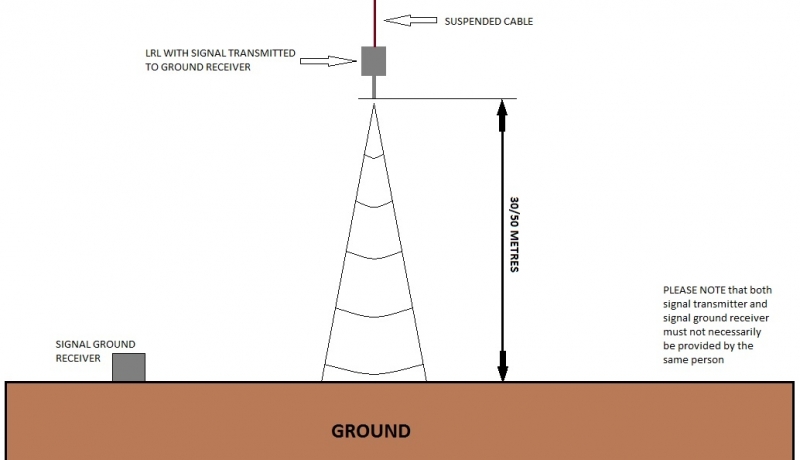


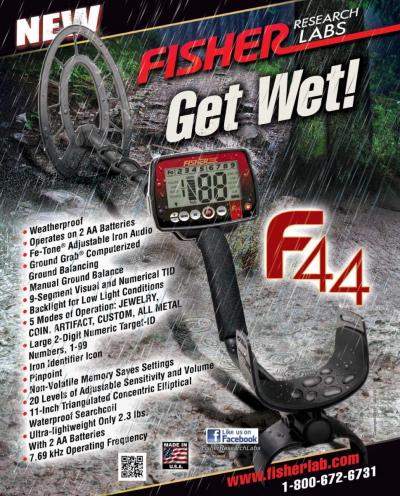



.thumb.jpg.834d08a5d63ebcd93a21f9a93d2e31f7.jpg)
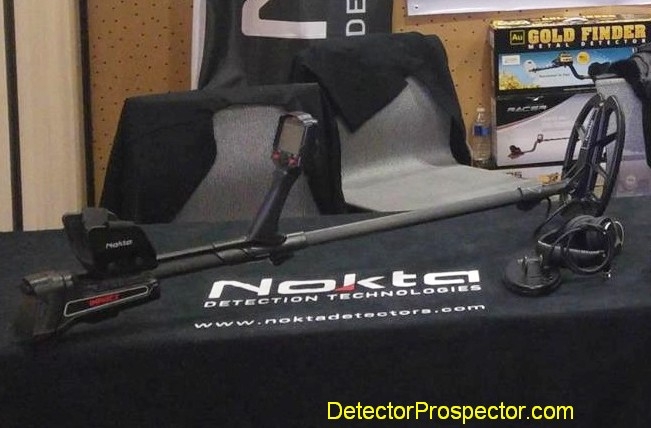
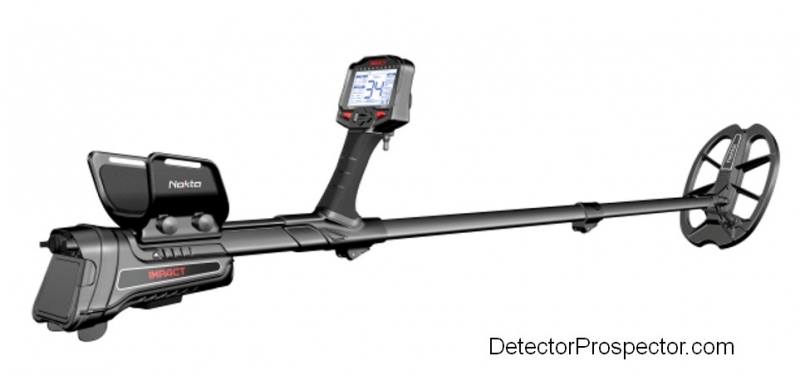

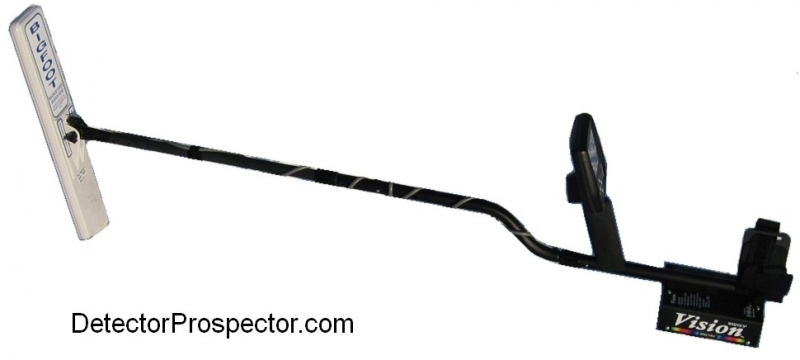
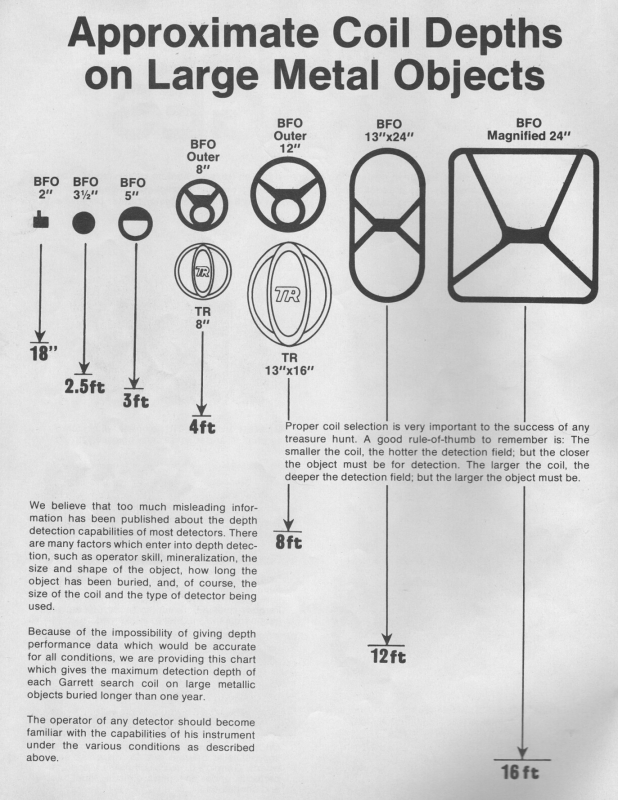
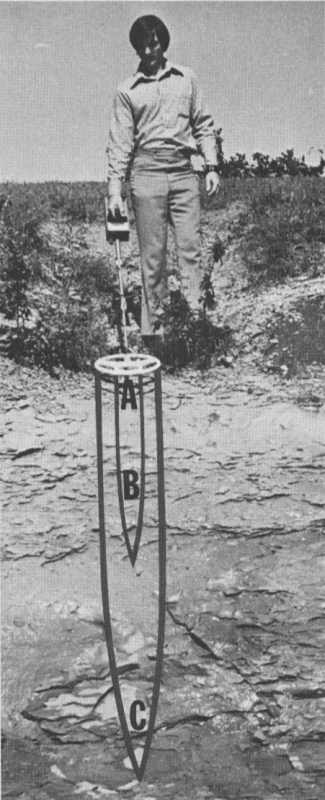
.thumb.jpg.77e4cb5bf39d44bdd2050d2edb7dfdb1.jpg)